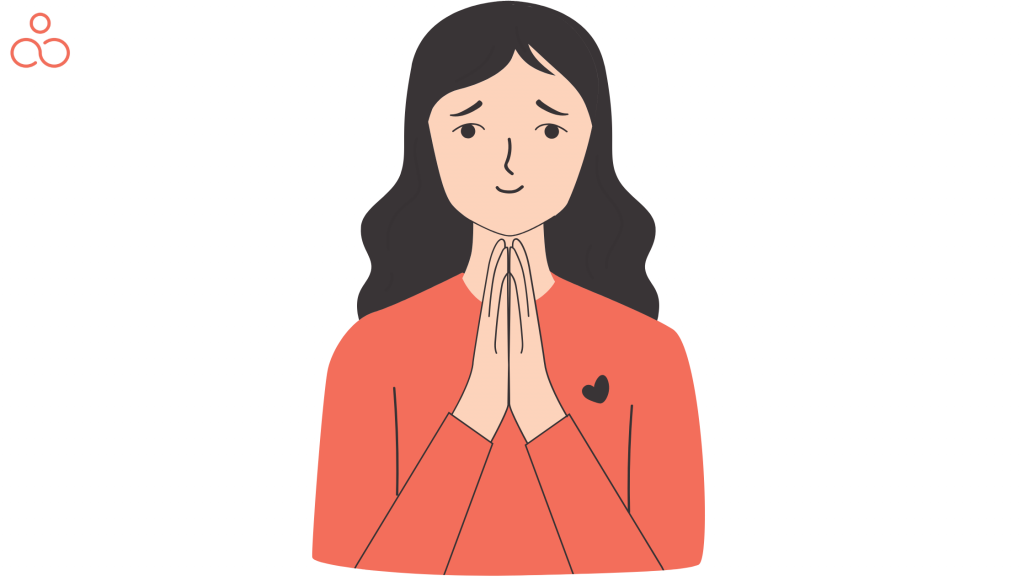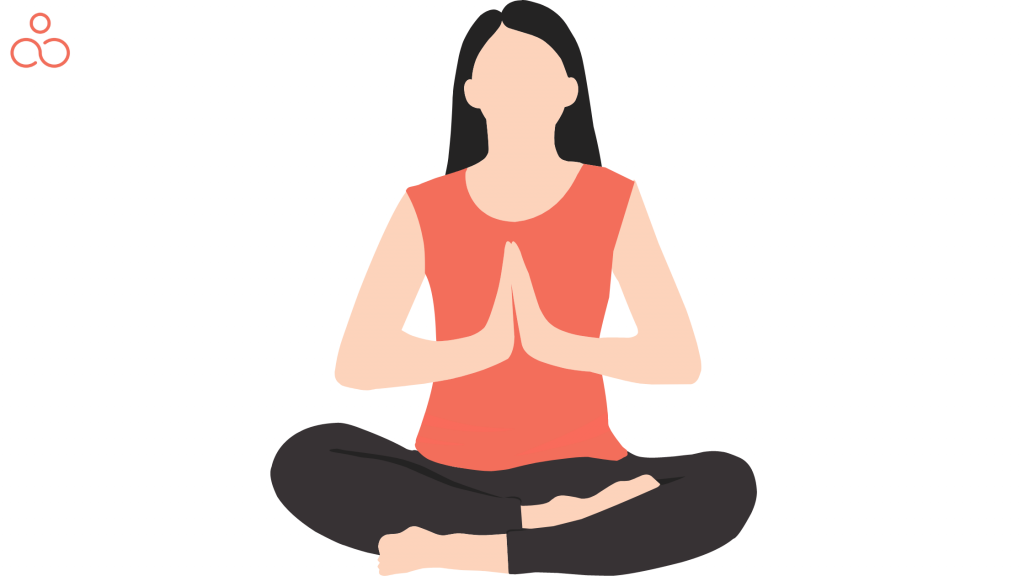What do you expect to hear as you come out of the savasana in your yoga class? A humble teacher bowing and saying kind words? A kind goodbye, an invitation for questions, or just a calming smile? Well, did you say namaste? For years, every yoga class that I have attended has invariably ended with namaste. It is like a beautiful ritual before leaving the mat and saying goodbye. This ritual has been consistent irrespective of class format or type of yoga. Whether the class is asana focused or is inclined toward meditation and spirituality, namaste has been an integral part of yoga routines. Would you want to do the same? Are you also looking for a possibility, How to end a yoga class without saying namaste? Here are some ways you can do that without compromising the comfort and calm of the class!
The difficulty in finding an alternative to namaste

Ever wondered why is it so difficult to figure out how to end a yoga class? Can it not be as simple as ringing a bell or saying goodbye? Many teachers are unable to take the plunge because most students are conditioned to expect namaste. Teachers also fear alienating students and making them uncomfortable with an unfamiliar routine. Over the years, many of them have resorted to chanting Om to end the sessions. However, several studios and practitioners have been against this practice too, as they associate yoga sessions with stretching and sweating and not spiritual chanting. Others have regarded this fear that spirituality may turn away practitioners also as appropriation.
However, it is still mind-boggling how a Sanskrit concept has become so intertwined, even with western yoga. Over the years, there has been an increase in the number of searches exploring how to end a yoga class without saying namaste. Why? Well, because the use of Sanskrit in western yoga has been regarded as cultural appropriation. They are against using namaste to end a yoga class because it is a greeting and not a parting message or statement of conclusion. Yoga practitioners around the world, however, aren’t unanimous in their thoughts regarding this. There is still a huge chunk of practitioners that believes using Sanskrit is a way to honor the legacy and heritage.
How to end a yoga class without saying namaste – Different ways…

Ever wondered why teachers are even trying to give up on namaste? There is so much cultural appropriation all around, why does the conclusion to a yoga class matter? Well, yoga is about mindfulness and conscious change and one needs to put in the effort to change to educate others.
Tackle the discomfort by talking about it: As businesspersons, we often fear change. Would talking about breaking the status quo drive them away? Would they sense revolution and take their business elsewhere? These are some questions that often hound our minds. However, an astonishing number of people are open to change if they know the right reasons. So, the first step should be to talk to your class about how and why you are consciously refraining from saying namaste. Tell them how you wish to respect the culture and the legacy by doing away with the appropriation.
Introduce your own ritual: You could be just ringing a bell, reciting a hymn, saying a positive quote or just inviting conversations; it is a good idea to explicitly explain the new ritual. This way, you will take the awkwardness out of the equation, and both you and your students will know what to expect next.
Bow in silence: Most yoga sessions are so profound that practitioners are busy gathering themselves and their inner silence toward the end of the class. Just sharing the silence with them and bowing to signify the end of the session can be a great way to conclude.
Chant Om: Research has shown that chanting Om can help to increase psychological alertness and sensitivity to sensory transmission. It has also been associated with a plethora of other benefits such as reducing stress levels, lowering blood pressure and purifying the environment. Thus, chanting Om at the end of the yoga class can help the practitioners to feel calmer and more energetic. It can also increase the benefits of the session.
Say thank you and talk about gratitude: Separating yoga from mindfulness takes away the essence from it. Most beginners join yoga classes to reap the benefits of mindfulness apart from the physical benefits. Helping them express gratitude to the universe, the people around them and everything else is great for a teacher to connect with their students as they end their yoga lessons. Start by saying thank you for joining you in the session and help them recognize what made them feel a bit better today. It could be the alarm that rang in time or the bowl of cereal that gave them energy. Help them recognize their blessings and express gratitude and end the class in harmony.
Help them embrace and appreciate peace with Om Shanti Shanti Shanti: Imagine a consistent loud noise that suddenly culminates in an eerie silence. The peace of a calming exercise routine is similar. Among the multitude of exercise disciplines in the world, yoga is very popular because of its ability to make the practitioner calm. Many teachers end their sessions with Om Shanti Shanti Shanti and help their students to appreciate the surrounding peace.
Wish them peace: May the peace be with you, sending you peace, go in peace, may you be peaceful, wishing you peace, etc. are some ways to end your class by wishing them peace. These phrases may sound cliché but your students will definitely leave with smiles on their faces.
Wish them a lovely day/week ahead: Life is indeed full of stress and there is nothing more calming than good wishes expressed with love. Wish them a happy week/day as you end a lovely session. This will help them tackle the day and the stress it brings with lots of positive energy.
Tell them to feel their heartbeat and breath: The human body and its functioning are one of the most precious things in the world. A great way to end your classes is to tell them to place their hands on their chest or stomach and feel their breath and beats. Tell them to appreciate their body for its incessant support.
Tell them to take care: Is there anything more beautiful than expressing your care? Tell them to take care and discover joy in the mundane things of life. Let them know that guardian angels are looking for them and even the worst times will end soon. Let them know that they are allowed to vent and express themselves and that it is ok to give up and lose hope sometimes. This will help them look beyond toxic positivity and find the space and freedom to express themselves and their pain.
FAQ’s
Why does the conclusion to a yoga class matter?
A yoga class is a calming experience and it should end similarly. An abrupt end can take away from the experience of the yoga class. Ending it appropriately will help the practitioners to carry the positivity throughout the day.
Can I still end my yoga classes with namaste?
Well, it depends on your choice, where in the world are you and your clientele. For instance, a yoga class in India can end with a namaste without ruffling any feathers whereas it can attract criticism in the west. Also, some clients are less likely to think about cultural appropriation than others. So, you can decide based on your situation.
What else can I say in the place of “namaste” to end a yoga class?
While “namaste” has been the go-to option for closing a yoga session over the centuries, it is not necessary to follow the same practice. You could use other phrases as mentioned below:
- Thank you!
- Have a great day!
- Stay healthier and happier!
- May you all be happy and shine bright! and so on.
Alternatively, you can also end the session with a Question and Answer session or a gratitude session allowing the participants to share their views, making it more personalized and connected.
The bottom line
Your yoga class is your intimate space and you can end it any way you want. Yoga teachers around the world use different ways such as using a singing bowl, narrating a story, playing calming music, moving around with pleasant incense or just saying bye. You can find what works for you as well. All you need to do is believe in it yourself. While there is no harm in ending it in different positive ways each day, setting a predictable routine works better for some practitioners. It offers them a safe space and makes it easier to turn up to practice each day.

